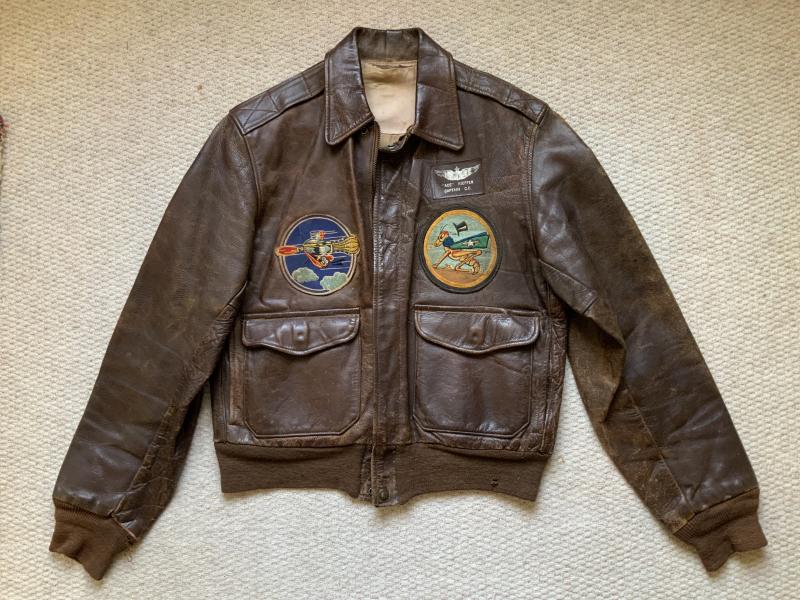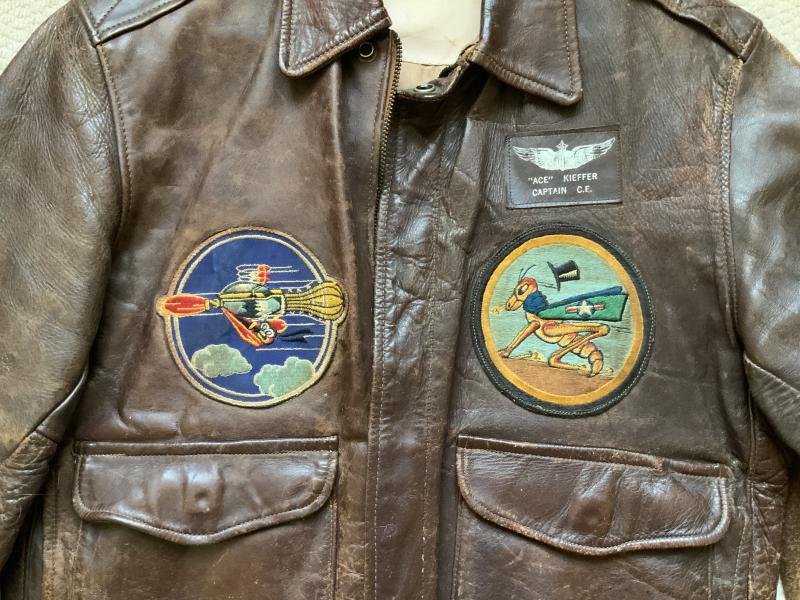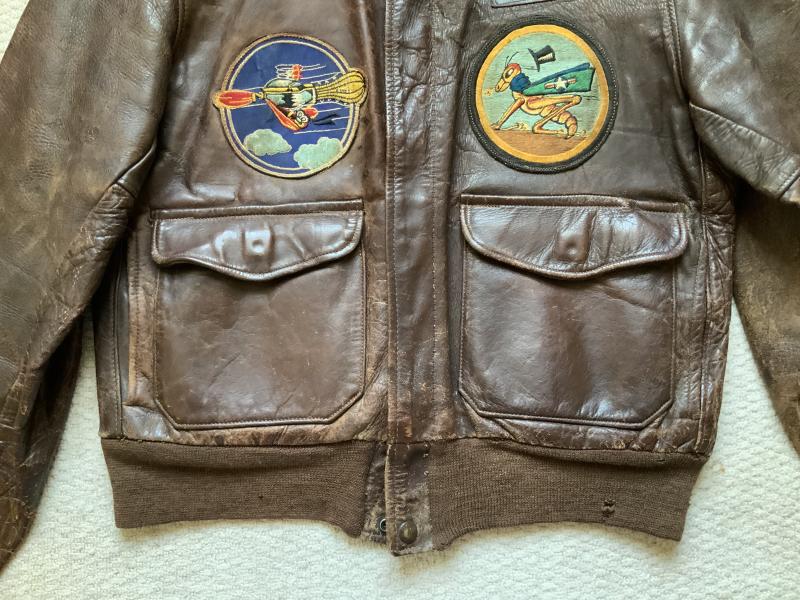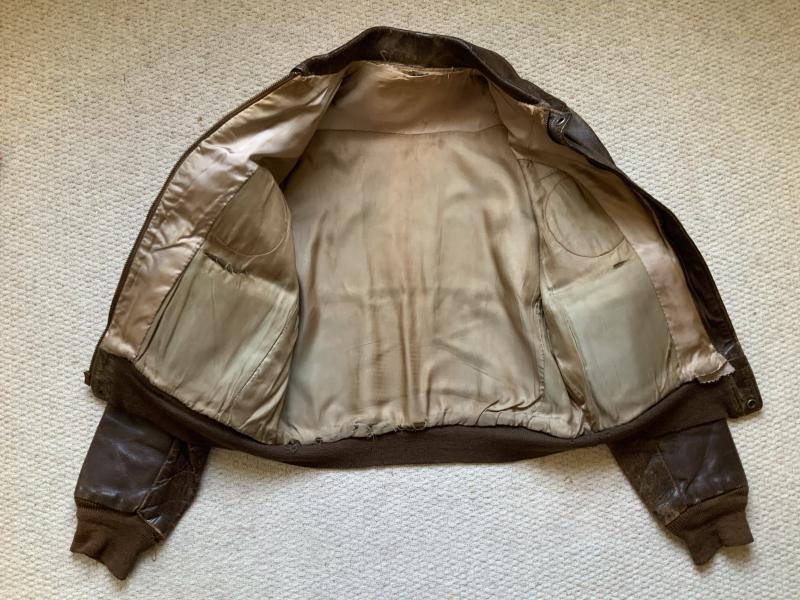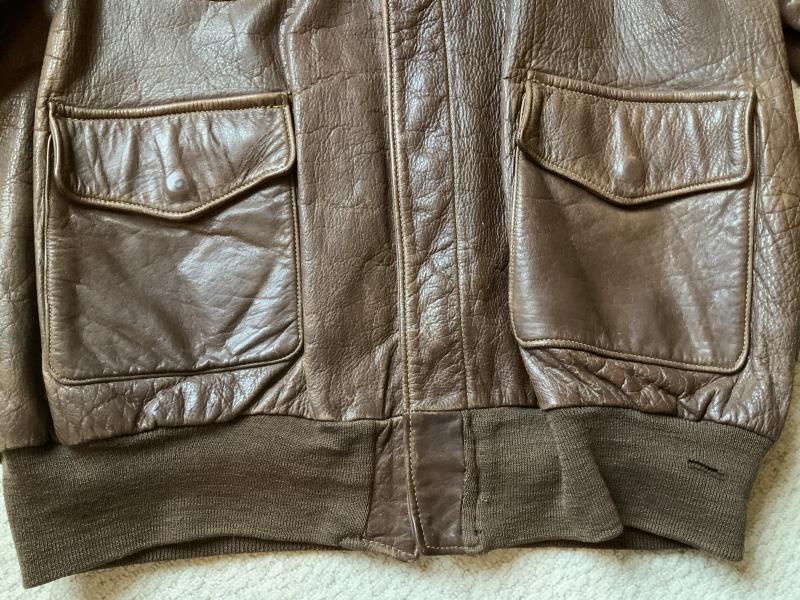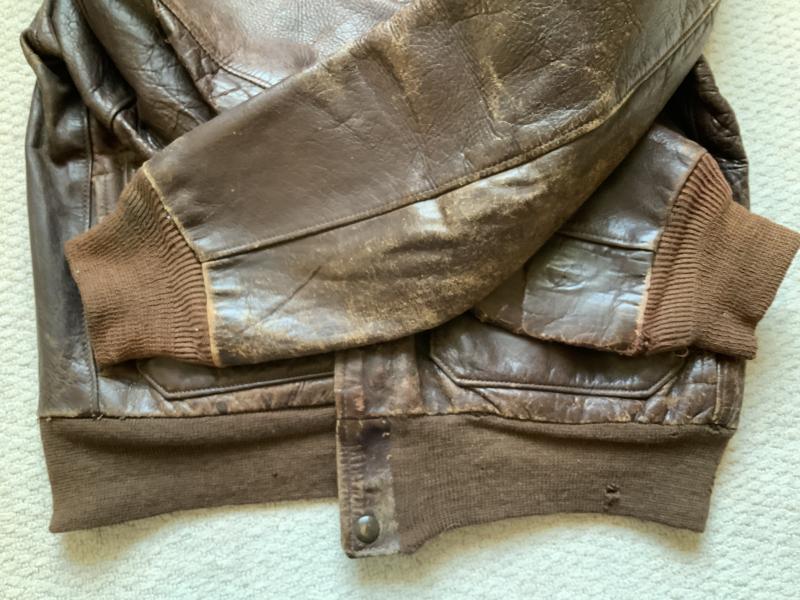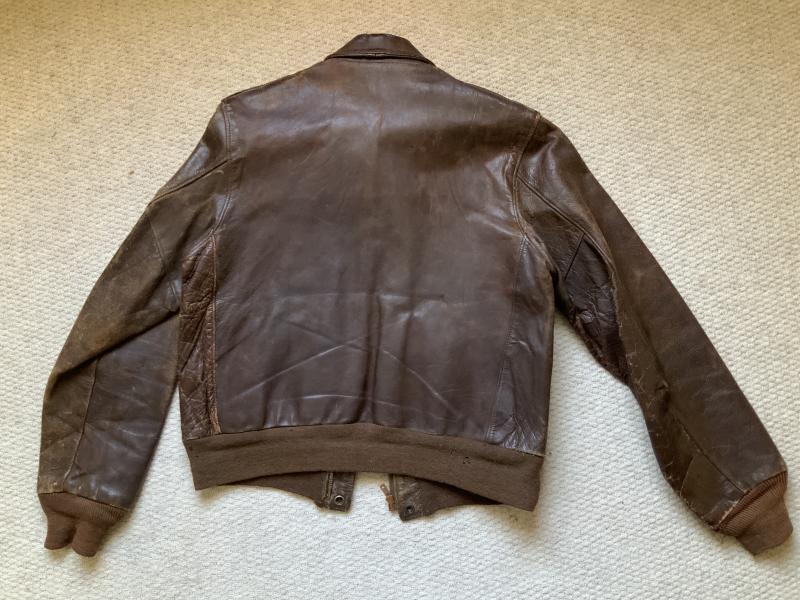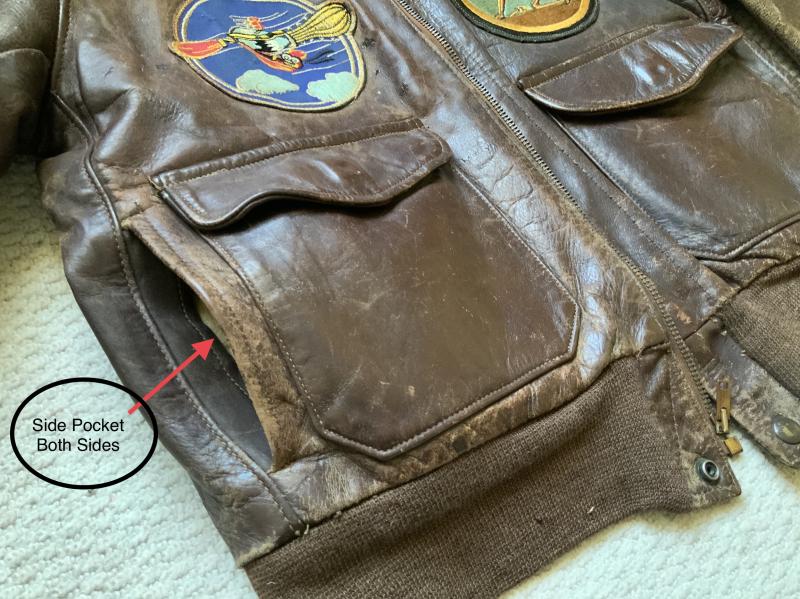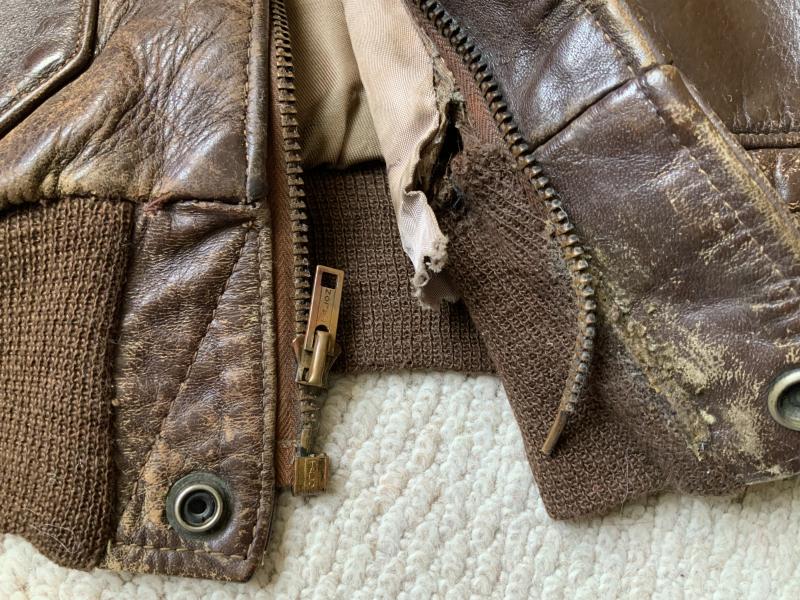Named Korean War Leather A2 Private Purchase
A Private purchase A2 Leather Flying Jacket Korean War Liaison pilot.
Attributed to Captain Charles “Ace” Kieffer L-4 Grasshopper Piper Cub Liaison Pilot. Awarded Silver Star for gallantry in action.
In good condition with age related service wear, Rare patches, on the left is a Rare WWII Helicopter Training Squadron (Significance unknown further research needed) and on the right we have an L-4 Grasshopper Patch.
Cuffs and waistband are in good condition with side pockets behind the front pockets. Bottom of the zip has become detached but still zips up.
Details of a combat flight with Colonel John Page Medal of Honour winner.
Colonel Page began rounding up stray Army men -- artillerymen, military police, engineers, medics, truck drivers -- who had been cut off from their outfits, and organized them into a shock-troop reserve for Puller's Marines. He split them into groups and drew up battle plans for each in an assigned sector of the Koto-ri perimeter.
The Chinese were thick in the hills around the village. They attacked at night and sometimes during the day. Each time the Marines drove them off, but casualties mounted. The small Marine hospital was filled, and Chesty Puller looked urgently for a way to evacuate the wounded fast. The airstrip in the village was too short for C-47's, and the small observer planes could carry out only two men at a time. The runway had to be lengthened; the job was given to Page.
The airstrip was inside the lines held by the Marines. Now it had to be stretched 1000 yards into no-mans land. Washboard ground, frozen solid, had to be graded level. Army and Marine engineers moved out with graders, and 15 volunteers from Page's reserve company went along. The Chinese snipers in the hills made it a bloody business.
Colonel Page asked Lt. Charles F. Kieffer, an observer-plane pilot, to fly him on an inspection tour of the village's defenses.Colonel Page climbed aboard looking like a walking arsenal: he carried a loaded carbine; his pockets were bulging with extra ammunition and grenades hung from his belt. In the air, he turned to Kieffer. "I would like," he said, "to fly over that tent at the top of the mountain pass just to the south."
Kieffer flew low over the spot, and Page studied the trails in the snow that led from the surrounding hills. Obviously, the tent was an enemy shelter. He motioned to Kieffer to make another pass, The pilot watched, open-eyed, as Colonel Page pulled the pins from three grenades, leaned from the cockpit and threw them down. The explosions blended into a single roar. The small plane nosed upward, and Kieffer looked back. The tent was destroyed.
The ridge was pockmarked with enemy foxholes, and from it Red soldiers fired at will at targets on the airstrip and in the village. Page shouted to Kieffer to fly low. The plane hummed along the ridge, and Page began bombing the foxholes. At the end of the ridge Page ordered Kieffer to circle back at 50 feet, and Page began raking the foxholes with his carbine. A Chinese soldier stood up and leveled his rifle at the plane, then dropped it and fell forward. Other Reds died in their foxholes.
Colonel Page used his last grenades to demolish a foxhole holding three Red soldiers, then ordered Kieffer to return to Koto-ri for more ammunition. But the second air raid was called off. The plane was needed to evacuate a badly wounded Marine.
Code: 57102

